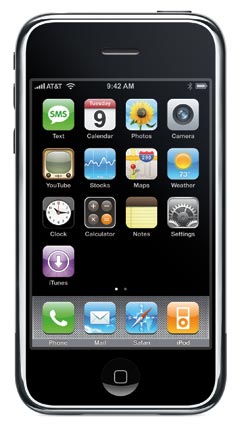Ever since a certain talk show celebrity began to “tweet” earlier this year, usage of Twitter has skyrocketed in popularity so much that it soon may have MySpace and Facebook—not to mention Latvia’s very own draugiem.lv social network—looking worried. While some are still arguing on how to use Twitter and where it fits into the current social networking scene, others are forging ahead and adapting the technology for their own needs.
Twitter is a free social networking and microblogging service that lets users broadcast messages up to 140 characters, known as tweets, to followers who subscribe to the feeds. About 25 million people use Twitter worldwide and the number is growing at a staggering 40 percent each week. Compare this to 200 million Facebook and 120 million MySpace users. In Latvia, as a result of recent media coverage, the number of users has already multiplied to several thousand, but still is well short of the nearly 2.5 million entities registered on draugiem.lv. Registering in Twitter is as simple as entering a username and e-mail address. Then you can begin to broadcast to the world.
What makes Twitter especially attractive is its accessibility via mobile devices. In January Jānis Krūms, a Latvian from Sarasota, Fla., effectively launched citizen journalism on Twitter as he whipped out his iPhone to photograph passengers huddled on the wing of the U.S. Airways aircraft that had plunged into the Hudson River. His photo and accompanying tweet, “There’s a plane in the Hudson. I’m on the ferry going to pick up the people, Crazy,” instantly propelled him into Internet stardom. Nearly 40,000 Web users viewed the photo in the first four hours.
The most popular use of Twitter up until now has been to literally respond to the “What are you doing?” prompt at the top of every page. It could be as simple as enjoying a Malabar Gold coffee, reading the latest bestseller by Malcolm Gladwell, sipping on birch juice in Cēsis or doing the customary jump over the bonfire. But Twitter has proven to be much more than that. The MarsPhoenix project used Twitter to provide updates both during the Mars landing in May 2008 and the subsequent surface cruising in the following months. The Tower Bridge in London regularly tweets every time it opens and closes for Thames River traffic and announces the names of the ships as well. During the worst bushfires in Australia’s history February users traded first-hand accounts, news and information on how to donate and seek help. The Centers for Disease Control and Prevention, or CDC, recently used Twitter to inform the public about the latest news on the H1N1 virus, also known as swine flu.
Just as well the Twitter prompt could be “What are you thinking?” because people report what they are thinking about, planning, reading, watching and paying attention to. Millions of thoughts contained within the 140 character messages are being gathered to form a collective consciousness. Since last year Twitter has begun to use a smart tool to detect emerging trends from its increasingly growing database of tweets. Its trending tool reported “North Korea launches missile” last month before many of the news sites had any mention of the event. With even more accumulated data Twitter could be able to predict events.
If you are looking for a hot topic, Twitter is the place to find up-to-the-second information. Google and the other search engines are now having trouble keeping up. When you ask Google a question it tells you where to go to find the answer, but when you ask Twitter the response reveals what individuals have posted on the topic. Twitter probably won’t replace Google, but it certainly adds a new perspective on searching on the Internet.
Latvians have also embraced Twitter (or čivinātājs as it is now commonly referred to in the Internet community) in myriad ways.
Toms Grēviņš from Rīga-based Radio SWH uses Twitter during his evening show to obtain instant feedback from his listeners.
Sandra Kalniete from the political party Pilsoniskā savienība provides an inside view to Latvian politics as she regularly tweets from the Saeima. Other politicians getting in on the game are Einars Repše, Aivars Lembergs, Ainārs Šlesers and Aleksejs Loskutovs, with more expected as the elections approach next month.
Current affairs programmes such as Latvian State Television’s 100.pants and TV3’s Nekā personīga provide details on what is coming up and who they plan to interview. For those Latvians who can’t get enough of travelling, the latest air fare bargains are provided by the Web site Superbiletes.lv. Well-known journalists such as Jānis Domburs, Juris Kaža and Pauls Raudseps have also been tweeting away for several months. Dienas bizness and Latvians Online, have been pumping daily newsfeeds via Twitter. Stay up to date with all things iPod and iPhone at ipodslv.
But it definitely won’t end there. What about getting updates on the movements of President Valdis Zatlers or your favourite Latvian rock band, getting the latest snow condition reports from the ski resorts in Latvia, learning a new word in Latvian every day or finding out when and where the next Latvian cultural event is about to occur. If this technology ever becomes mainstream, organisations and Latvian government agencies will be able to quickly read the sentiment of the general population and readjust their policies appropriately. The real capabilities of the Internet are only emerging.




